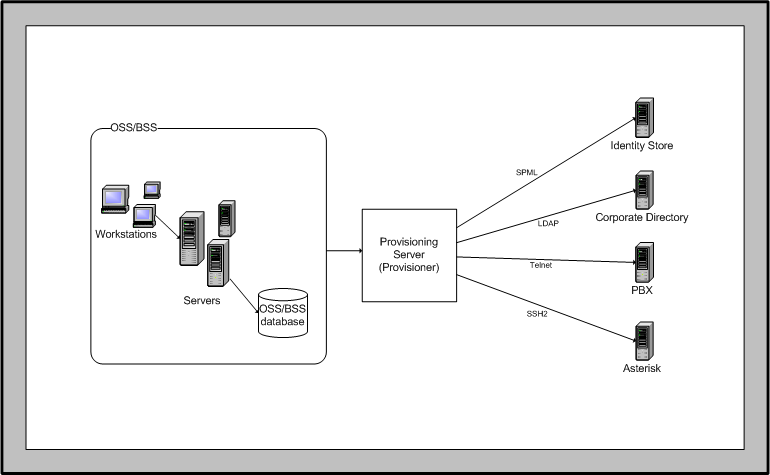
Provisionerís behavior can be modified by changing XML configuration files. Those XML configuration files are located at ~home/provisioner/config. These configuration files give Provisioner the flexibility should the need to add new provisioning rules arise. Itís not very uncommon that provisioning rules change quite often. For each request that Provisioner process it applies a pre-configured set of rules, thus we can say that modifiyng the provisioning rules we can modify Provisioner behavior.
Provisioner receives work orders from business support systems to provision services and access info to service's subscriptors. Once the system has received a request, it determines in which identity stores it has to execute the request. Then it transforms the request into one or more specific provisioning commands for those identity stores, and finally it executes those commands.
When business support systems wants that certain services be activated to a subscriber in several identity stores, Provisioner guaranties that those operations are executed in the same order that the business support system sent them.
The system prepares one response for each completed request and delivers this response to the corresponding business support system, inserting it in the request queue. This response informs the business support system of the requestís outcome.
The following diagram shows a high-level architecture view of Provisioner:

Following a provisioning requirement high-level workflow: